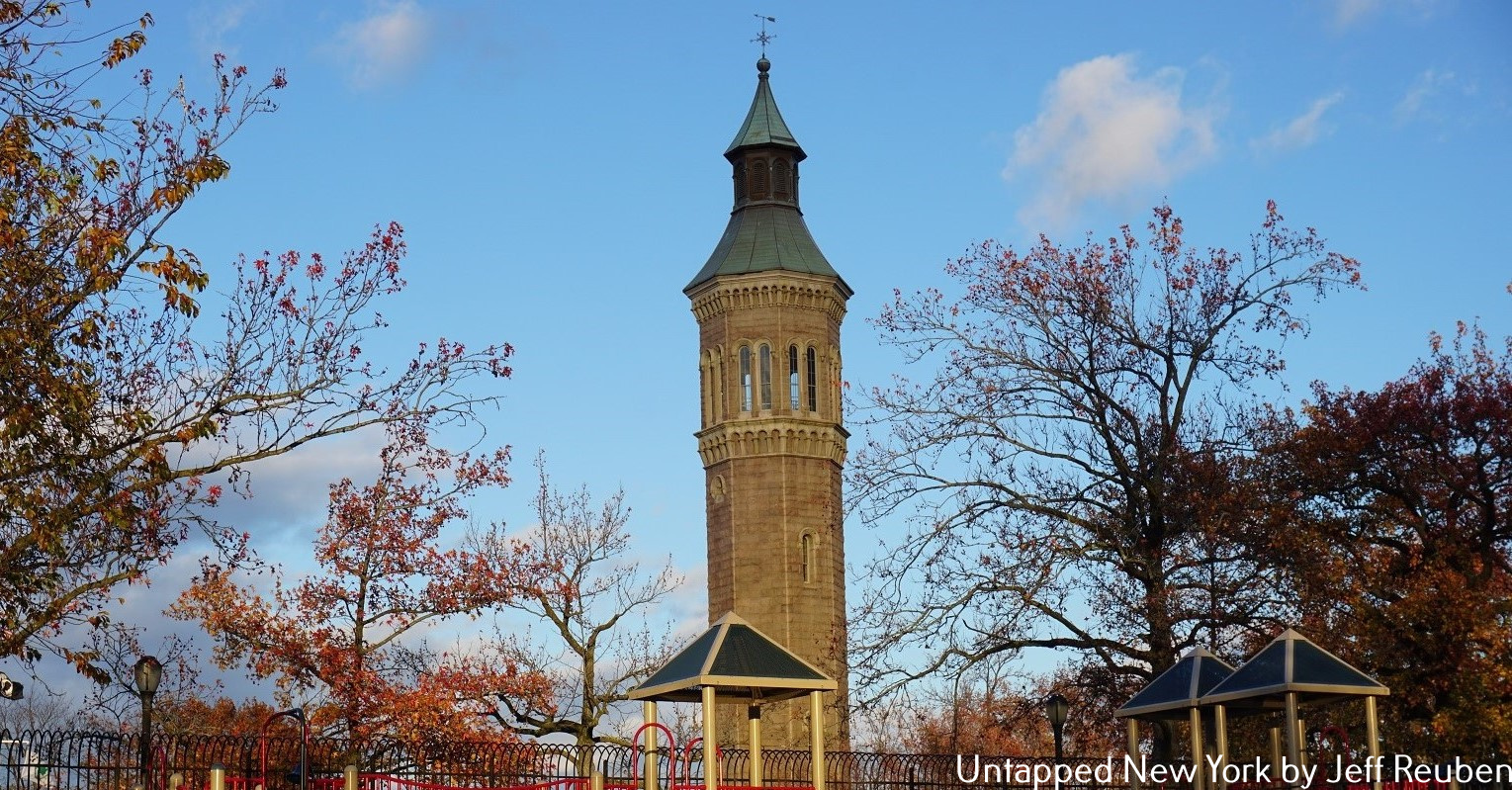Standing on a bluff 200 feet above the Harlem River, the recently restored Highbridge Water Tower is once again welcoming visitors to experience stunning views from a 19th century historic landmark.
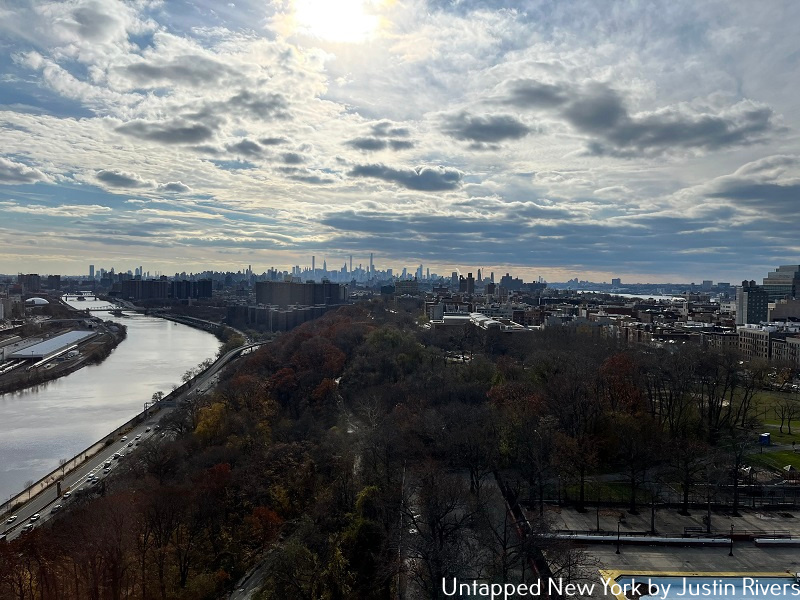
A familiar if somewhat mysterious site to many New Yorkers, the 200-foot tall octagonal Tower was built to bring water service to the highest points in northern Manhattan. Water from the Croton Aqueduct started flowing in the lower and middle sections of the island in 1842 and the High Bridge was completed in 1848, as a permanent means to carry the aqueduct across the Harlem River.
However, Upper Manhattan was not served by the aqueduct that passed through it due to the area’s hilly terrain. The system provided water pressure by means of gravity and therefore locations higher than the Central Park Reservoir—about 120 feet above the Harlem River—such as Washington Heights with elevations up to 265 feet, were left high and dry.
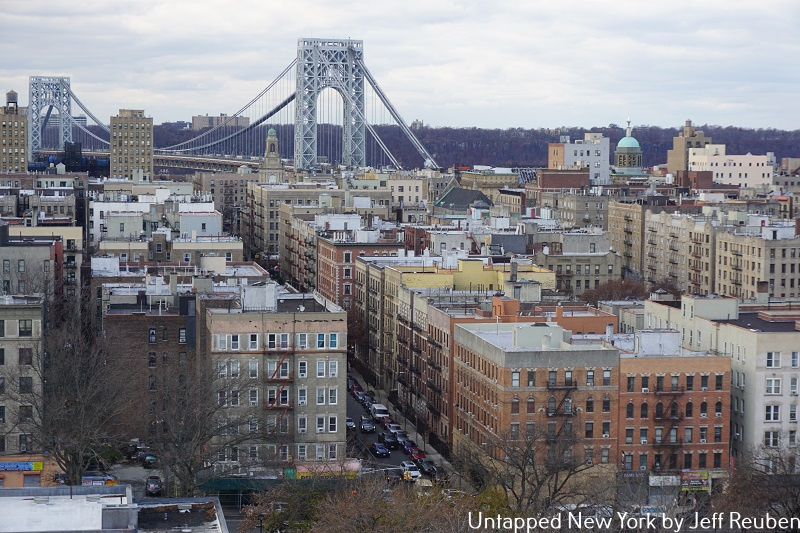
To rectify this, the City built the High Service Water Works near the High Bridge, consisting of several facilities, of which the Tower, completed in the summer of 1872, is all that remains. Other elements, now long gone and mostly forgotten, included a reservoir, opened in 1870 and replaced by the Highbridge Park pool in the mid 1930s, plus pumping stations, a coal dock, and a coal shed.
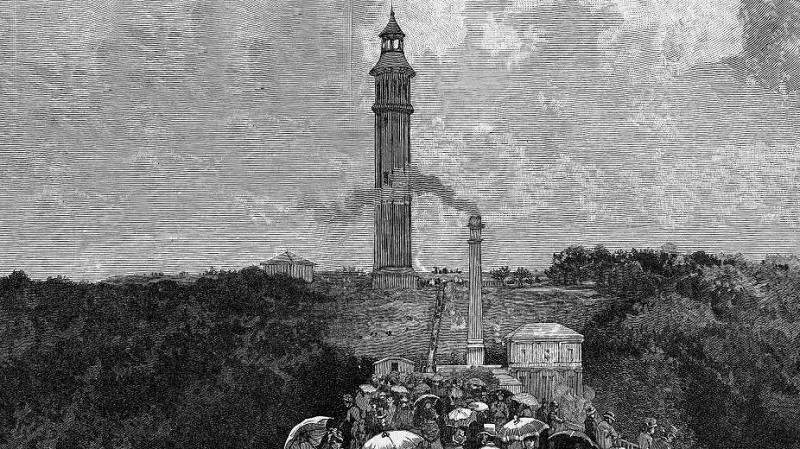
The illustration above shows the original pumping station with its distinctive smokestack. A larger pumping station was added in 1896 inside Highbridge Park near W. 179th Street.
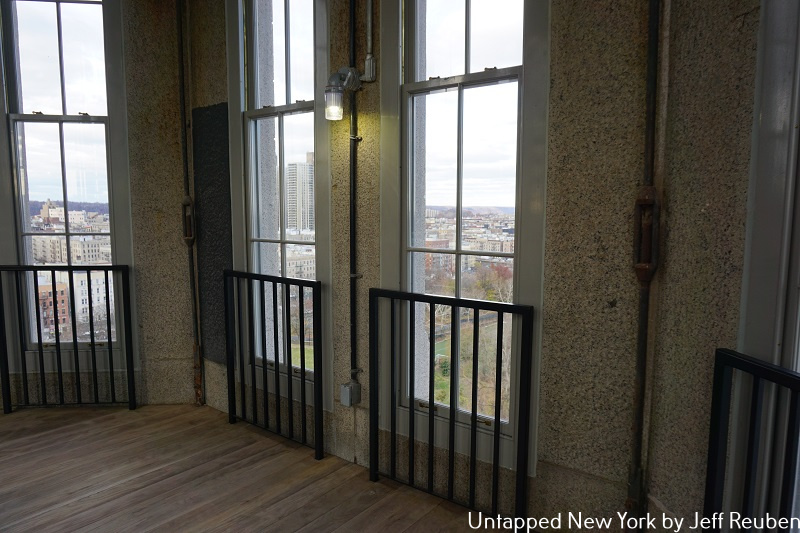
What is now the Tower’s observation level originally housed a 47,000-gallon tank at an elevation of 336 feet. It is a light-filled space, with two large arch-shaped windows on each of the tower’s eight walls, facilitating tank inspections and repairs in an era before electric lighting. Today they offer expansive vistas.
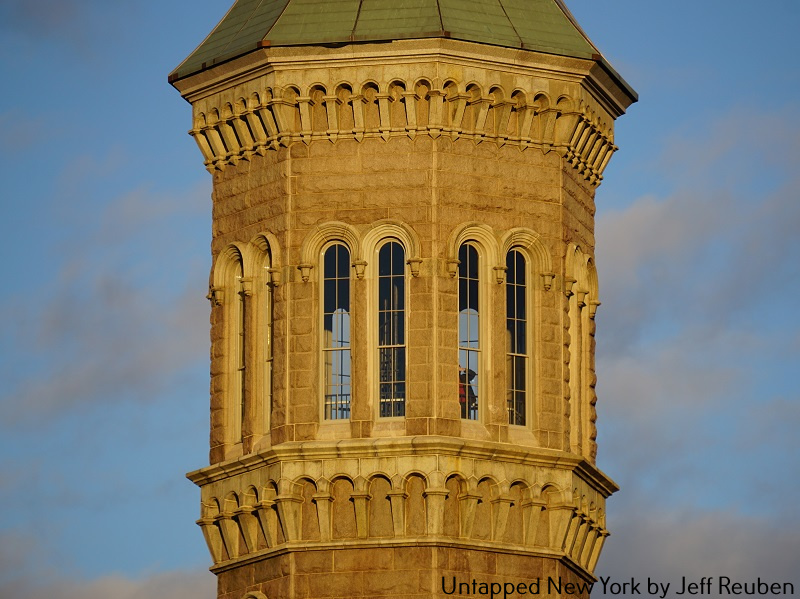
To serve its functional requirements, the City could have constructed a utilitarian structure. But, in keeping with its practice of making the water system’s visible portions distinctive architecturally, for example the former Egyptian Revival reservoir at what is now the New York Public Library, the stone Tower was designed in a style that has been compared to minarets and campaniles.
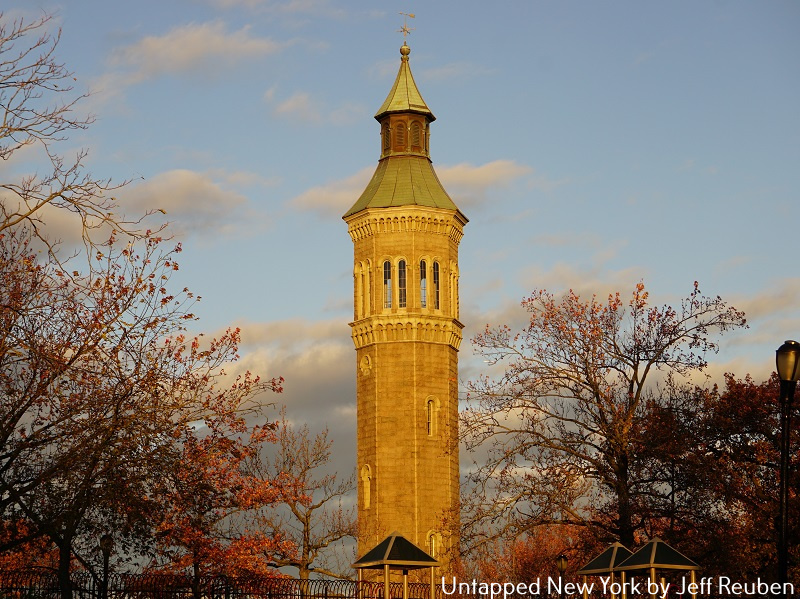
There was originally a public lookout in the Tower’s narrow cupola, but the current use of the old tank room provides a more spacious vantage point. Although shorter than the 281-foot tall Trinity Church of 1846, given the Tower’s hilltop setting, it offered a perch from the highest altitude then available in Manhattan with “the finest panoramic view obtainable anywhere outside of a balloon car” as the New York Herald described it in 1881.
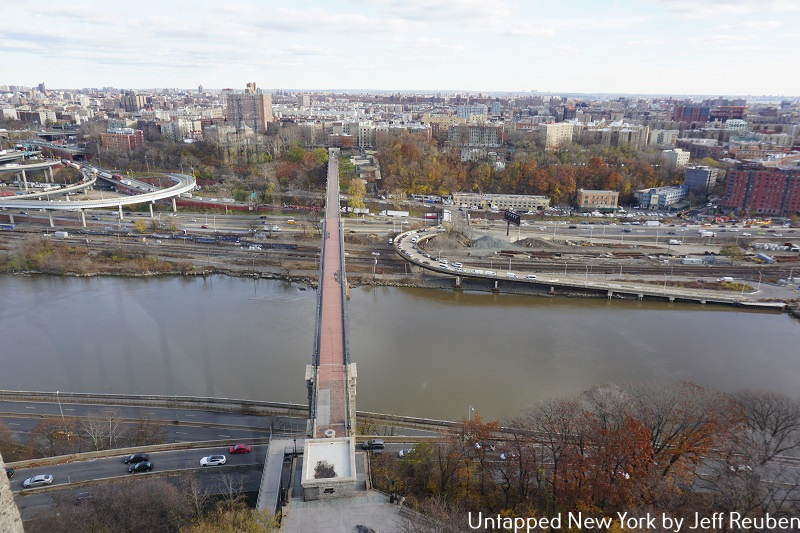
The Tower operated until December 15, 1949, when it was rendered unnecessary by a new electric powered pumping station on Amsterdam Avenue. The Department of Water Supply, Gas, and Electricity wanted to raze the Tower, but it was preserved thanks to, of all people, Robert Moses in his capacity as Parks Commissioner. Along with the High Bridge, also mothballed in 1949, it was transferred to Parks jurisdiction in 1955.
Since then, it has hosted an electric carillon, been designated a New York City Landmark, and was damaged by a 1984 fire and Hurricane Sandy in 2012. It is a survivor and is entering its sesquicentennial newly revitalized.
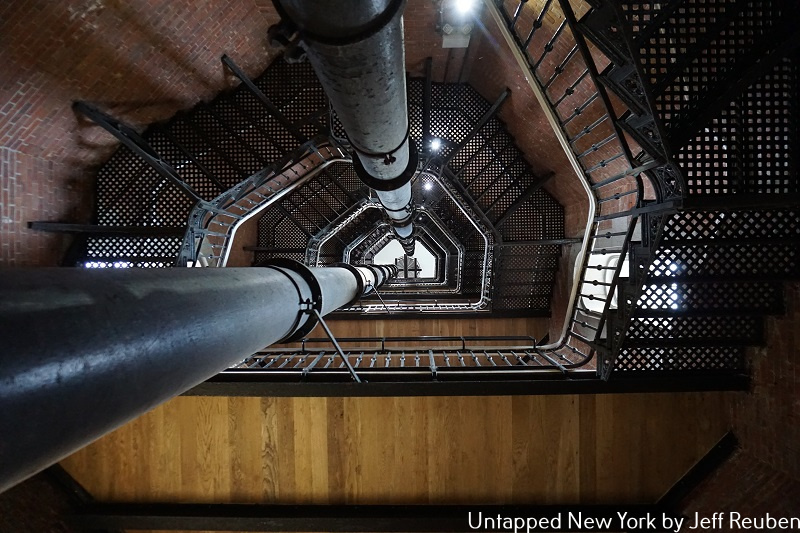
The webinar on April 16th at 12 p.m. is free for Untapped New York Insiders. If you’re not a member, join now and get your first month free with code JOINUS. The event will also include an overview of the building’s design and history. The Tower retains its historic stairs and replacement pipes added in the 1890s.
Next, check out the Top 10 Secrets of the High Bridge!
Contact the author at Jeff Reuben.






